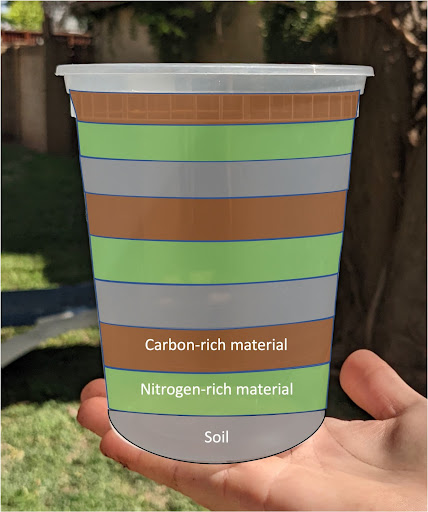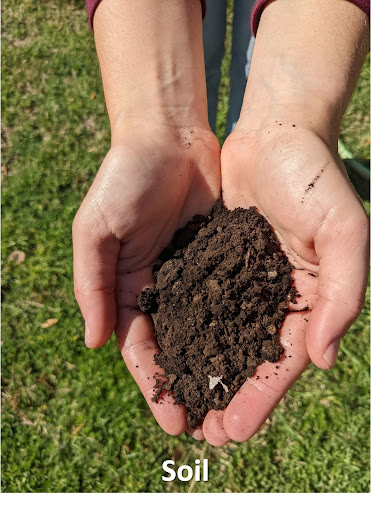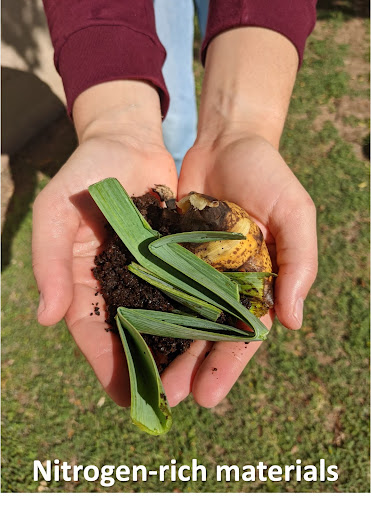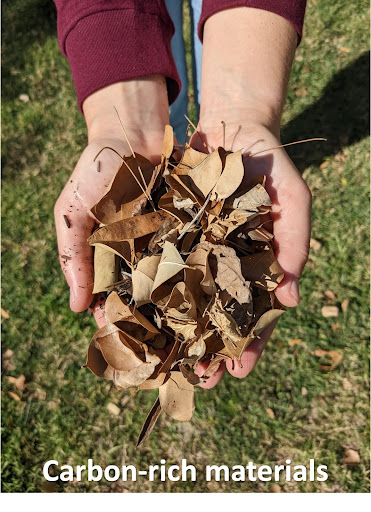Earth Science Week Classroom Activities
Composting Materials and Rates
Activity Source:
Geological Society of America. Adapted with permission.
Activity authored by Jessie Bersson (Arizona State University), Carla McAuliffe (TERC), and Matt Dawson (GSA). (Inspired in part by an activity at www.sciencebuddies.org)
Soils are a key component of the interface between the biosphere (life) and the geosphere (land). Soils support life.“Our soils support 95 percent of all food production, and by 2060, our soils will be asked to give us as much food as we have consumed in the last 500 years,” according to Living Soil by The Soil Health Institute.
Composting is one action that students can take to help people move toward a more sustainable world. This activity will build on another activity in this calendar to help you understand how leftover food scraps and other materials can be used to renew soils via composting. Specifically, you will explore if and how different materials break down into compost.

Image credits: Jessie Bersson/Creative Commons
Materials
-
Composting materials listed in the “Sustaining Living Soil with Composting " activity
-
2–5 items to test in the compost



Image credits: Jessie Bersson/Creative Commons
Procedure
-
Food scraps and plant matter break down into compost, but what about other materials? Collect 2–5 items and cut them into small pieces that are no longer than 5 cm long.
-
Watch this video about composting: https://bit.ly/composting-for-kids.
-
Make predictions: What materials do you think will break down the fastest? Which will break down the slowest? Do you think any won’t break down at all? Why? What will the materials look like as they break down?
-
Begin filling a compost bin using the procedure outlined in this “Sustaining Living Soil with Composting " activity by the Soil Science Society of America.
-
When the container is about half full, add pieces of your test materials into the middle of a brown layer that is a little thicker than the other layers.
-
Add a piece of tape to the outside of the container that lines up with the layer where you placed the objects to allow you to find them more easily when you dig them up later.
-
After adding your test materials, continue filling up your container.
-
After five days, check the test items to see whether they are beginning to break down. Write descriptions of each item’s appearance and/or take photographs of them.
-
Shake or stir the bin and moisten with water if necessary. Re-bury your items.
-
Repeat steps 8 and 9, continuing up to eight weeks. Think about these questions, then discuss them with a partner and/or your classmates:
- Did your predictions match what happened?
- How might you explain the differences in decomposition rates?
- Did any of the results surprise you?
- How might you adjust this procedure to test other factors related to decomposition rates?
- Look at the “Compost Life Cycle” figure at https://bit.ly/compost-life-cycle. What might happen if you threw out the apple core instead of composting it? What other cycles are you familiar with related to Earth‘s systems?
NGSS Connections
- Science and Engineering Practices—Developing and Using Models; Asking Questions and Defining Problems
- Disciplinary Core Ideas—Earth’s Materials and Systems
- Cross Cutting Concepts—Systems and System Models; Cause and Effect
SDG Connections
- 12: Responsible Consumption and Production
- 15: Life on Land
